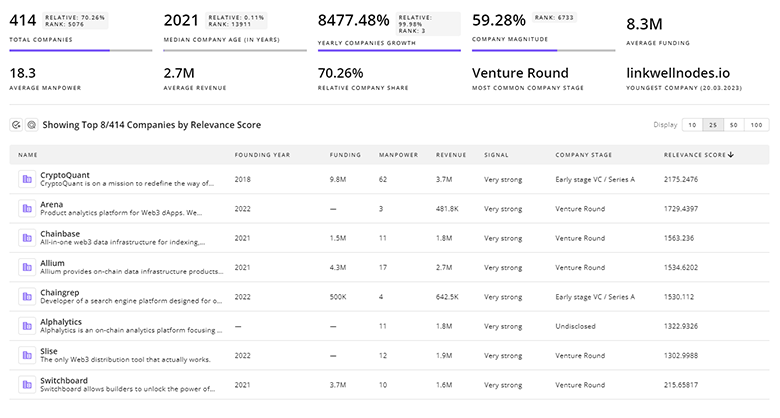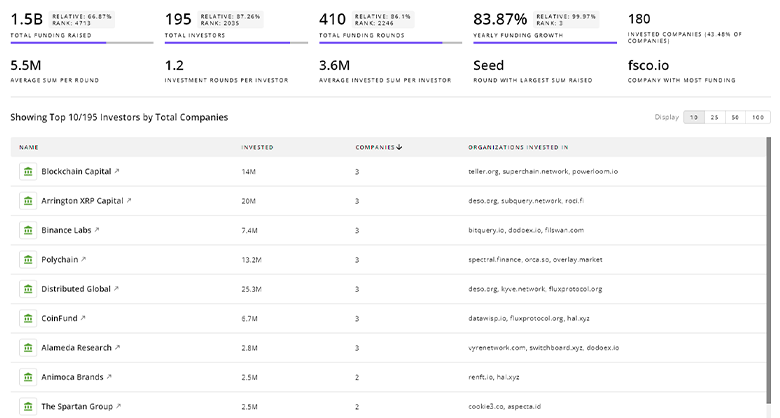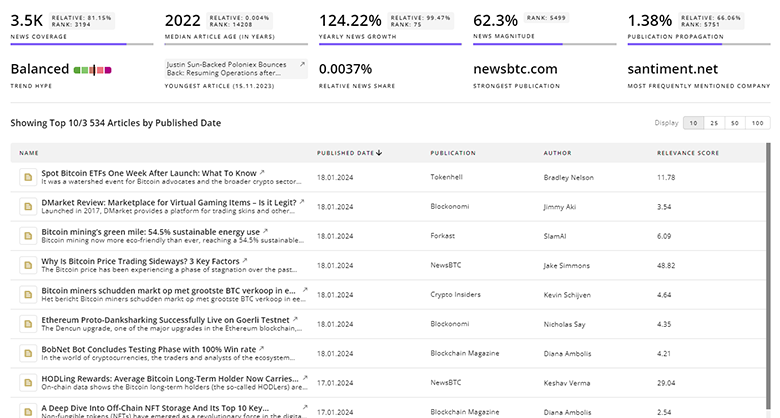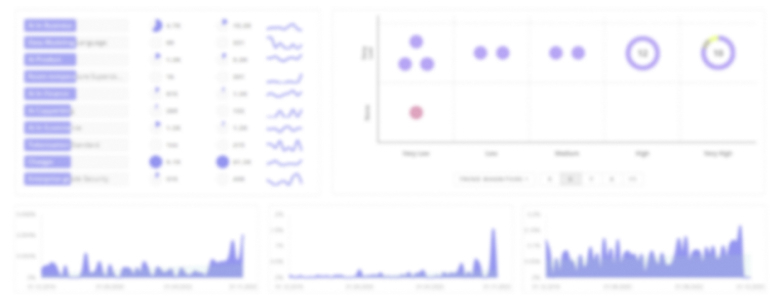
Proactive Maintenance Report
: Analysis on the Market, Trends, and TechnologiesThe proactive maintenance market has shifted from rule-based schedules to data-first, economics-driven programs; the internal proactive maintenance trend report records total funding raised of $1.32B and 387 funding rounds across 1,601 companies, signalling a maturing investment ecosystem and practical deployment momentum. This report synthesizes patent trends, market forecasts, and company activity to show where value accrues: high-accuracy predictive models, IIoT sensor-to-edge pipelines, and integrated asset operations platforms that convert uptime gains into measurable TCO improvements.
The last time we updated this report was 86 days ago. If there’s something missing or off, your tips are welcome!
Topic Dominance Index of Proactive Maintenance
The Dominance Index for Proactive Maintenance merges timelines of published articles, newly founded companies, and global search data to provide a comprehensive perspective into the topic.
Key Activities and Applications
- Predictive failure forecasting: ML models estimate remaining useful life (RUL) and trigger interventions to prevent unplanned outages; patent activity shows 78 filings directly on predictive scheduling and 91 on fault detection, proving technical depth and commercialization focus.
- Condition monitoring and diagnostics: continuous sensor capture (vibration, temperature, oil analysis) plus root-cause analytics to shift repairs from symptomatic to corrective-at-source Proactive Maintenance (news synthesis).
- Resource and spare-parts optimization: algorithms link RUL with inventory and crew schedules to minimize both downtime and carrying costs; patents emphasize resource planning and optimization.
- Integrated asset operations (APM/EAM/CMMS): platforms unify sensing, analytics, and work-order flows so maintenance decisions become part of daily operations and compliance records.
- Digital twin and simulation-driven maintenance: virtual models reproduce equipment behaviour to test interventions and refine economic thresholds for maintenance actions.
Emergent Trends and Core Insights
- AI-first prognostics driving ROI proofs: market studies project rapid expansion (e.g., market-size projections range from multi-billion 2024 bases to $33–107B by late-decade depending on scope), and the technology shift is from descriptive dashboards to prescriptive, auto-generated work orders Predictive Maintenance Market Outlook 2025, Global Predictive Maintenance Market Report. The implication: buyers will favor vendors that tie model outputs directly to maintenance actions and cost avoidance.
- Edge and hybrid deployments: patents and company reports highlight edge compute for low-latency anomaly detection; this reduces cloud bandwidth, preserves data sovereignty, and supports real-time shutdowns where safety-critical. Practically, enterprises will adopt hybrid architectures to balance latency, security, and scalability.
- Platform consolidation versus best-of-breed specialization: large integrated suites (CMMS+IIoT+ML) compete with focused sensor/analytics specialists; the market is trending toward platform consolidation but niche players will win by owning specialized sensor-to-model accuracy advantages.
- Economic optimization as decision metric: patents show growing emphasis on balancing maintenance cost vs failure cost; maintenance moves from technical scheduling to finance-linked optimization, changing procurement KPIs and vendor selection criteria.
- Adoption gaps and workforce constraints: multiple market reports flag a skills gap—data engineering, asset-domain ML, and field-digital skills limit rollouts; services and managed offerings will remain growth vectors Predictive Maintenance Market Forecasts.
Technologies and Methodologies
- Machine learning and time-series prognostics: ensemble RUL models, anomaly scoring, and causal feature attribution enable actionable alerts and prioritized interventions.
- PHM and RUL methodologies: physics-informed ML and hybrid models combine sensor signatures with degradation physics to improve lifetime forecasts for scarce-failure assets.
- IIoT sensor stacks and multisensor fusion: vibration, thermography, oil chemistry, and torque sensors fused for higher signal-to-noise in anomaly detection; monitoring technique segmentation in market research shows vibration remains dominant but multisensor fusion is rising.
- Edge computing and secure telemetry: local inference and secure transfer to cloud for aggregated training reduces round-trip latency for safety-critical alerts.
- Optimization algorithms for scheduling and inventory: integer programming, heuristic schedulers, and economic thresholding translate prognostics into minimal-cost maintenance plans.
Proactive Maintenance Funding
A total of 130 Proactive Maintenance companies have received funding.
Overall, Proactive Maintenance companies have raised $1.6B.
Companies within the Proactive Maintenance domain have secured capital from 399 funding rounds.
The chart shows the funding trendline of Proactive Maintenance companies over the last 5 years
Proactive Maintenance Companies
- Nanoprecise Sci Corp — Specializes in AI-driven vibration analytics and edge-to-cloud pipelines for industrial assets. Their focus on very early anomaly detection and ambitions for near-99% RUL accuracy make them a strong specialist for heavy-rotation equipment and OEM partnerships.
- Infinite Uptime — Operator-oriented predictive services provider that pairs IIoT deployment with plant reliability consultants; claims high fault-prediction accuracy and packages outcomes as reliability-as-a-service for manufacturers.
- ALERT Analytical — Niche in vibration analysis and thermography training plus services; valuable for companies converting condition-monitoring pilots into operational programs because of field expertise and diagnostic depth.
- UpKeep — Mobile-first CMMS/EAM provider integrating IIoT and work-order automation; strong adoption among mid-market operators seeking rapid digitization of frontline maintenance workflows.
- New Current — A specialist implementing edge analytics and embedded systems to support real-time prognostics in constrained environments; suited to applications requiring on-device inference and minimal connectivity.
Delve into the corporate landscape of Proactive Maintenance with TrendFeedr’s Companies tool

1.9K Proactive Maintenance Companies
Discover Proactive Maintenance Companies, their Funding, Manpower, Revenues, Stages, and much more
Proactive Maintenance Investors
TrendFeedr’s Investors tool provides insights into 389 Proactive Maintenance investors for you to keep ahead of the curve. This resource is critical for analyzing investment activities, funding trends, and market potential within the Proactive Maintenance industry.

389 Proactive Maintenance Investors
Discover Proactive Maintenance Investors, Funding Rounds, Invested Amounts, and Funding Growth
Proactive Maintenance News
TrendFeedr’s News feature offers you access to 1.5K articles on Proactive Maintenance. Stay informed about the latest trends, technologies, and market shifts to enhance your strategic planning and decision-making.

1.5K Proactive Maintenance News Articles
Discover Latest Proactive Maintenance Articles, News Magnitude, Publication Propagation, Yearly Growth, and Strongest Publications
Executive Summary
Proactive maintenance is now a commercial playbook, not an experimental niche. The business value is twofold: measurable reductions in unplanned downtime and inventory/capacity efficiencies realized when prognostics are integrated into operations and procurement. Winners will be those who (1) deliver verifiable model accuracy on asset classes that matter to buyers, (2) integrate prognostics seamlessly into maintenance workflows and spare‑parts economics, and (3) provide hybrid deployments that meet enterprise security and latency needs. For operators, priority actions are to pilot sensor/edge configurations on critical assets, demand financial‑impact proofs from vendors, and align maintenance KPIs with asset TCO rather than only technical uptime metrics.
Are you an insider in the trends or tech industry? We’d love for you to contribute to our content.










